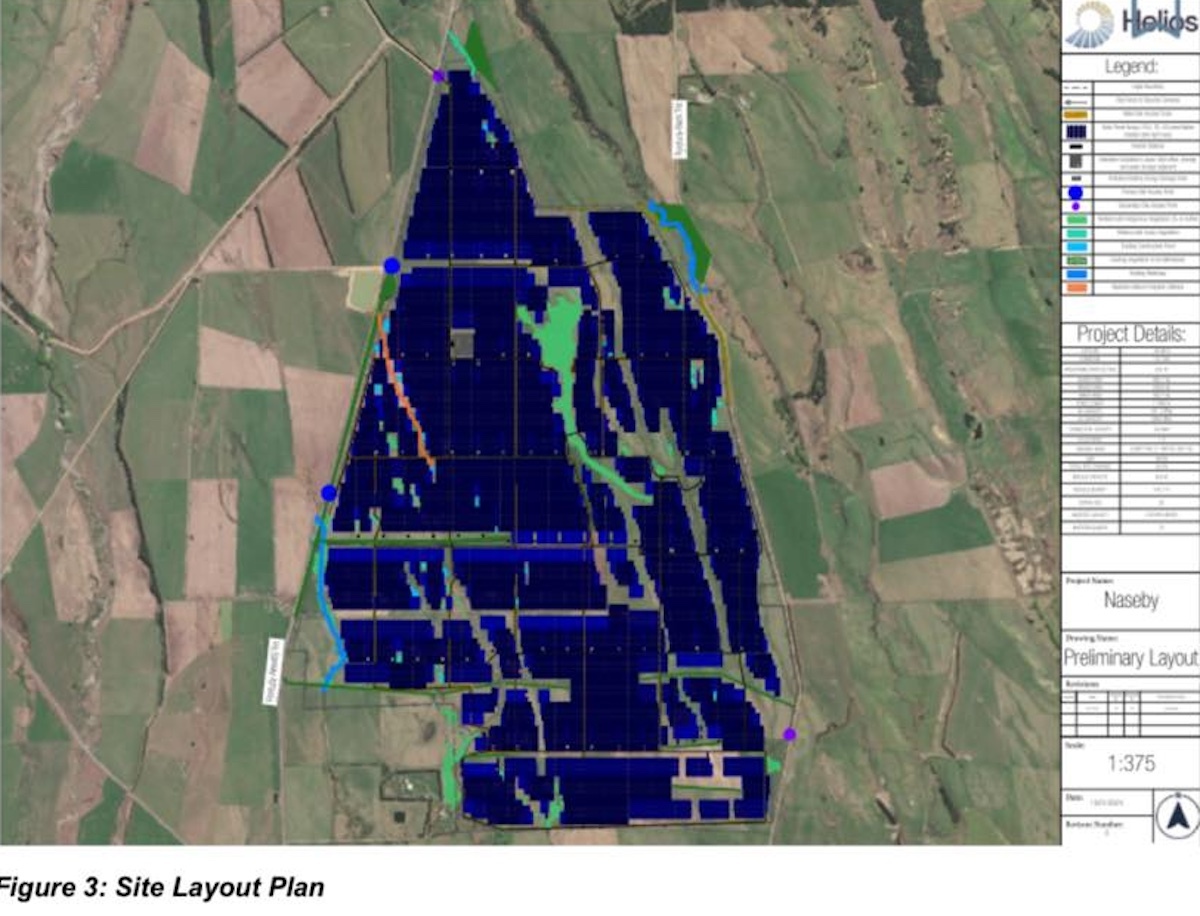Helios solar farm build not planned until 2029
Aimee Wilson
07 July 2025, 6:00 PM
 Helios has changed its initial application for a solar farm in the Maniototo.
Helios has changed its initial application for a solar farm in the Maniototo.Helios has removed the battery energy storage system component of its Maniototo Solar Farm proposal, in response to opposing submissions concerned about the fire risk.
A hearing for the proposed 300MWac photovoltaic solar farm (and associated infrastructure including substation and transmission line infrastructure) will be held in Ranfurly between August 19 and 21.
The proposal attracted 171 submissions.
The company planned to build the solar farm on land leased from two local farming families between Naseby and Ranfurly, connected into the National Grid via the Naseby Substation on Fennessy Road.
Following a review of the submissions, Helios formally requested to Central Otago District Council (CODC) in mid-June that the Battery Energy Storage System (BESS) component of the solar farm proposal be removed from the application.
Helios said that given the projected construction of the solar farm wouldn’t begin until 2029, the specific BESS model was not able to be confirmed due to the current uncertainty of the market.
“Given the level of detail required to definitively respond to submitters' questions regarding fire mitigation measures associated with the BESS is not available at the time of the hearing, (and cannot be until detailed project design is significantly more advanced, closer to the time of project installation) we have made the decision to remove the BESS from the application.”
Any potential future provision of BESS centrally within the site adjacent to the substation would require a separate resource consent and would be considered by CODC based on its own merits.
“If a future application of this nature were to be submitted for consent, Helios would be able to include much more comprehensive detail of the exact model and specifications of the BESS and inbuilt fire mitigation measures in relation to the context of the local environment.”
The company confirmed a fire risk assessment was currently being prepared which would address submitters’ comments in regards to the fire risk of the PV solar farm components subject to the application.
The solar farm would consist of approximately 550,810 solar panels, mounted on a tracking system.
A new 33/220 kV substation would be constructed within the site to collect power from the inverters throughout the site via 33kV cables and transform this to 220kV, suitable for transmission to the Transpower substation.
Opponent Rose Voice said the project was the same as on day one: “[T]he project is the wrong size and in the wrong place”.
“Nothing has changed, our community has already overwhelmingly said they don’t want this installation, and the CODC needs to listen,” she said.
Rose said the Transpower data showed the Roxburgh/Livingston line was not capable of handling the output from that sized installation for a large proportion of the time.
“It’s crazy they want to build something so big the grid can’t cope with it.”
Rose said she believed there would be many panel fires a year. “[N]ot every failure will result in a fire, but many will,” she said.
Have a story to share or comment to make? Contact [email protected]
Read more: Solar farm hearing back on track
NEWS
JOBS






